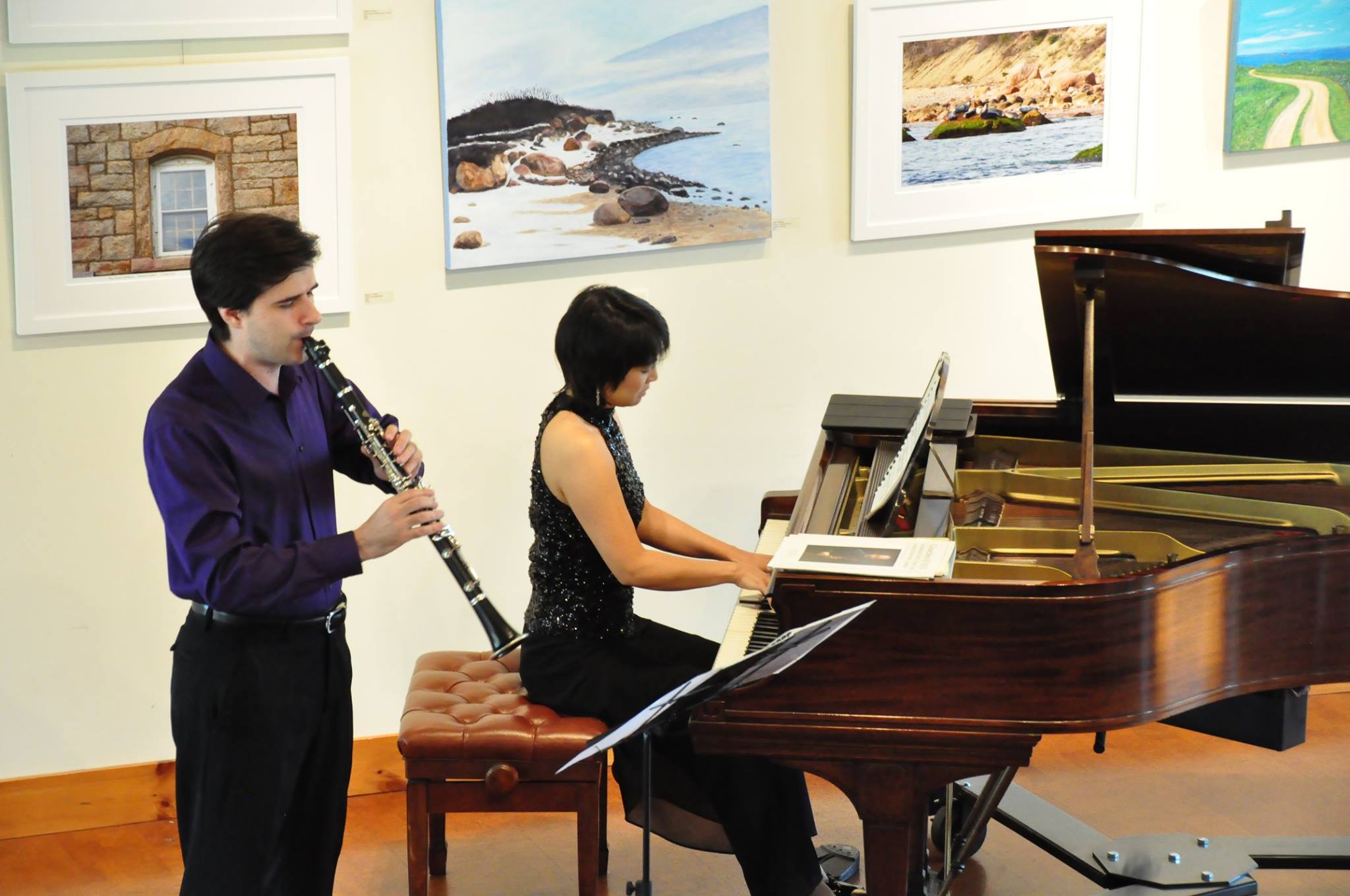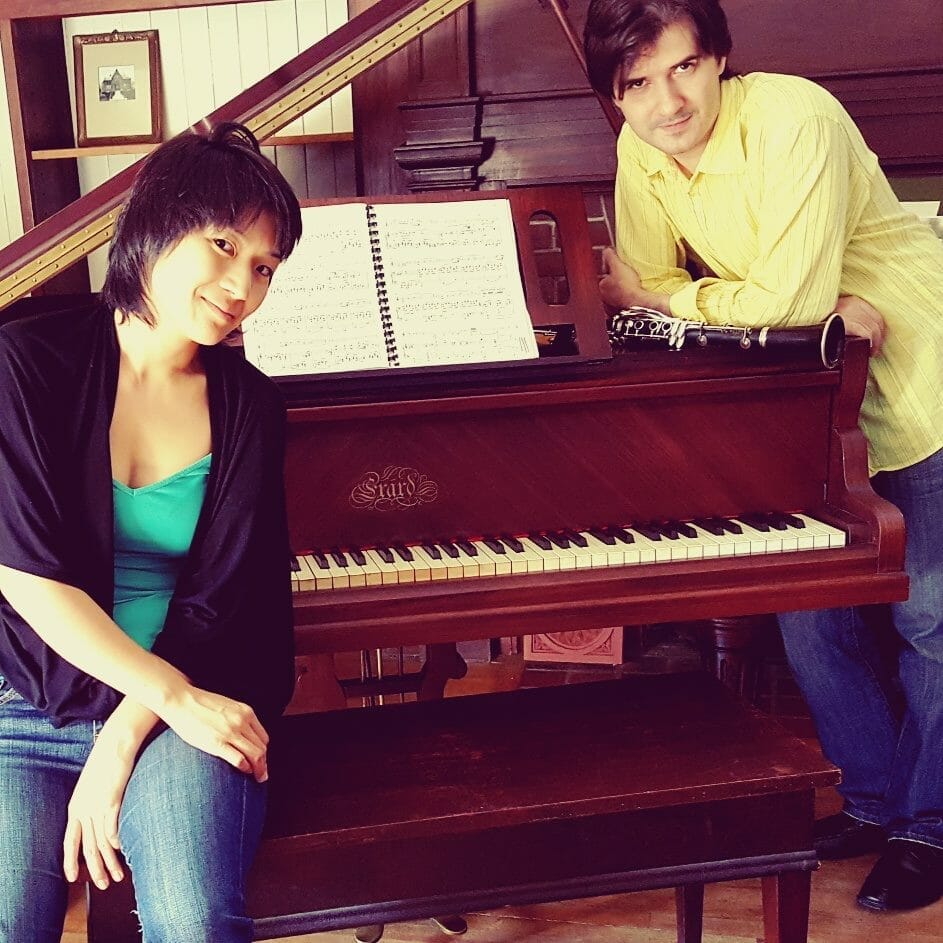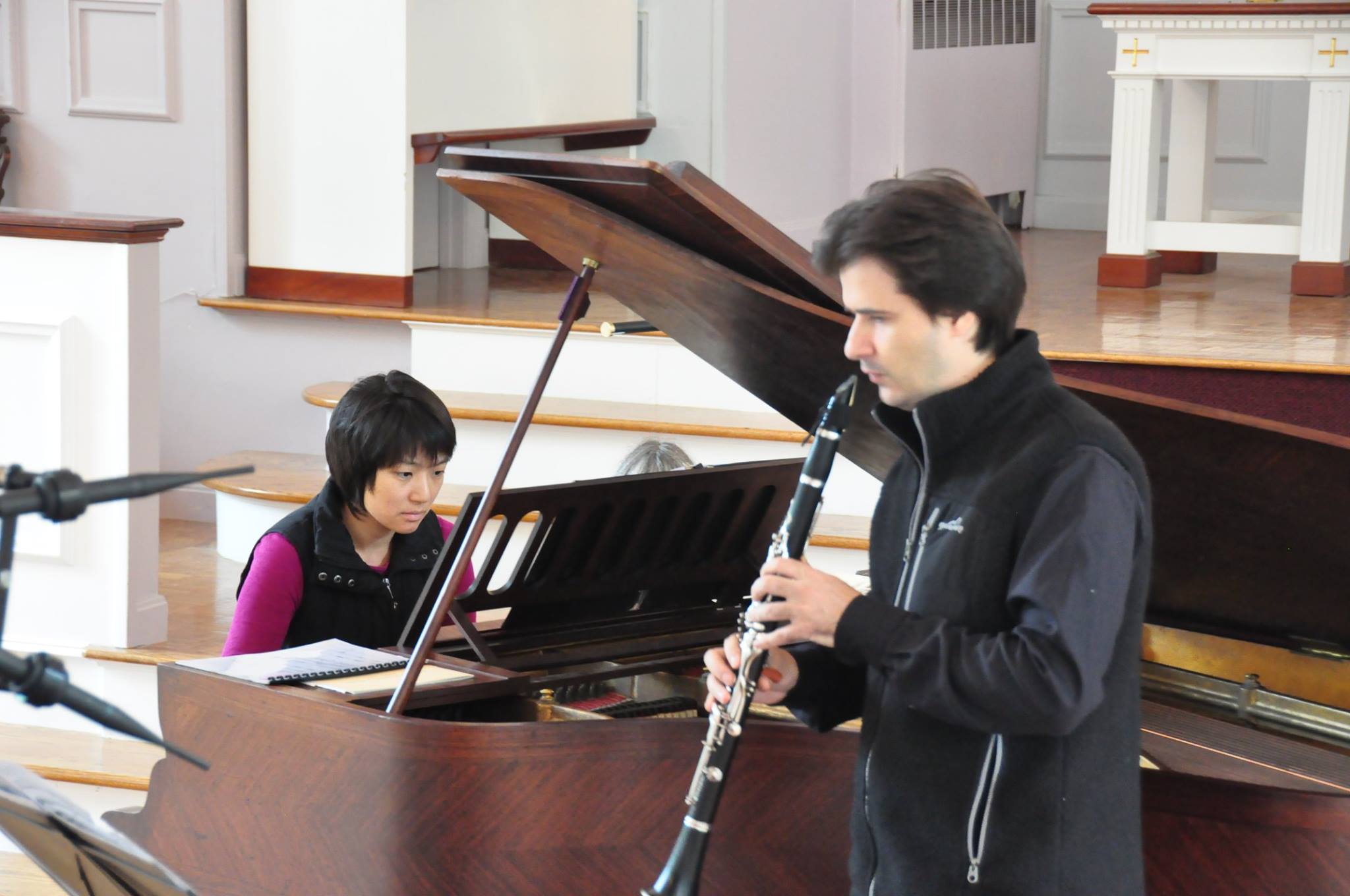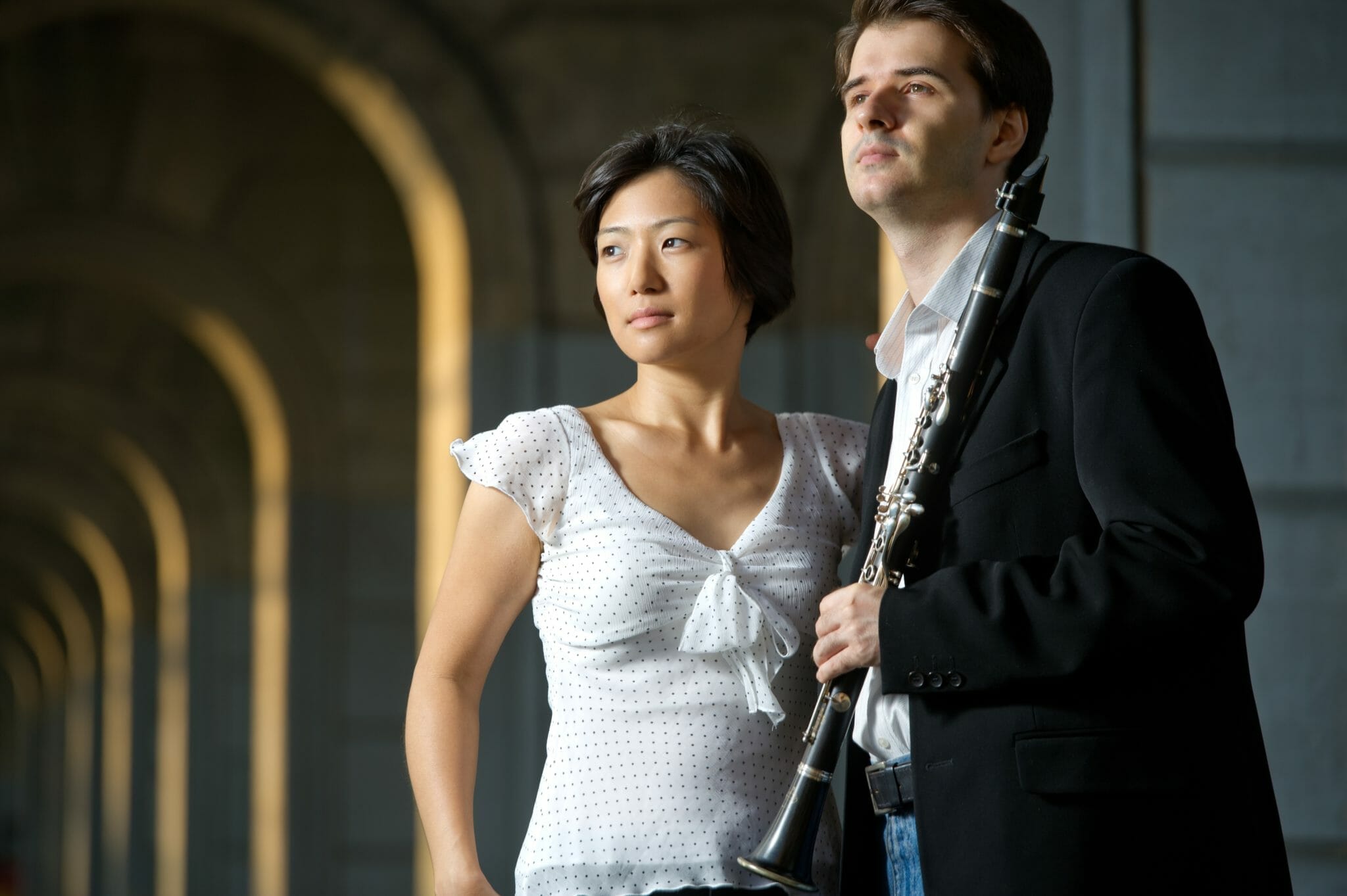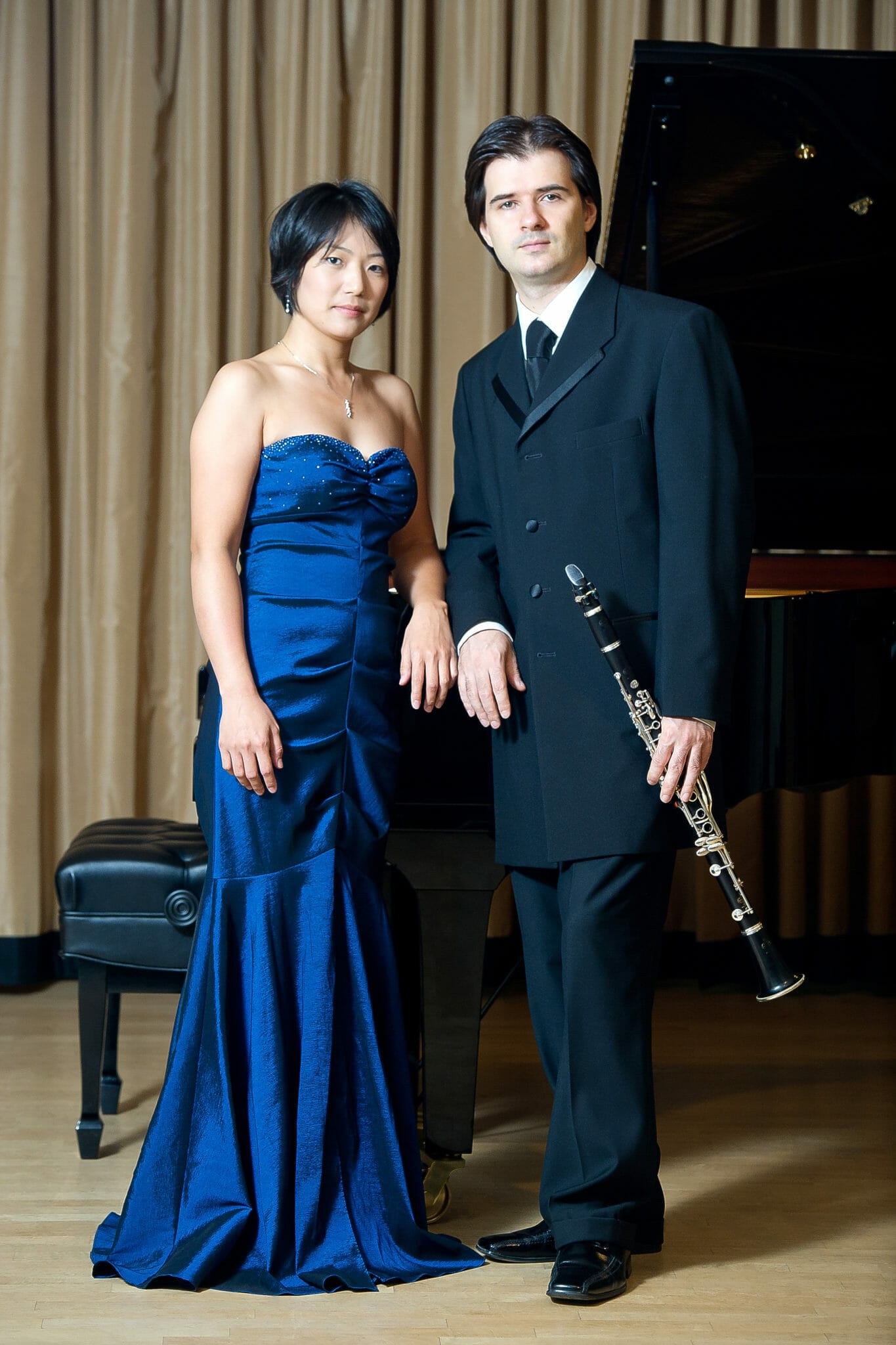On March 1, 12017 the Shtrykov-Tanaka Duo will perform works for piano and clarinet at the weekly Dame Myra Hess Concert, simulcast and later available via podcast on WFMT.
Pianist Misuzu Tanaka hails from the UK; and clarinetist Maksim Shtrykov was born and raised in Minsk, Belarus, where he lived for the first 23 years of my life. The duo met at The Juilliard School in 2012 and have collaborated since.
March 2, 2017 Dame Myra Hess Concert Program
The program they are performing is as follows:
Clara Schumann's Drei Romanzen, Op. 22 for Clarinet and Piano
Robert Schumann's Intermezzo from “F-A-E” Sonata
Johannes Brahms Sonata in E-flat Major for Clarinet and Piano, Op. 120, No. 2
Robert Schumann's Abendlied from 12 Klavierstücke für kleine und große Kinder, Op. 85
Meet the musicians
Meet pianist Misuzu Tanaka and clarinetist Maksim Shtrykov here, as you read their answers to questions posed to them by Picture this Post about their musical background, the program they have selected and their passions in music and beyond---
PTP: What were your first musical experiences?
Misuzu: I started playing the piano at the age of 5. My mother was musical, but she never had any serious training. She and I played duets together during Christmas at a local church, which was one of the memorable moments growing up. At around that time, we would frequently go to the Barbican or the Royal Festival Hall and hear the best musicians and also go to the ballet. I am very thankful for having parents who were had such awareness and interest in the music scene in London.
Maksim: My parents are not musicians and I began playing the piano when I was 5. Later on, I picked up the recorder because that was a requirement if you want to play any wind instruments. I moved onto the clarinet when I was 7. My father was interested in jazz and I heard a lot of saxophone at home. When my father asked me what instrument I want to play, I answered “saxophone”. However, the school did not have a teacher for it and it was an instrument that was frowned upon as a symbol of America during the Cold War.
PTP: What have been the most important career milestones for you to date?
Misuzu: One of the milestones in my career was performing in the Gewandhaus in Leipzig, Germany. I performed some of my favorite works by J. S. Bach, a composer I hold dear to my heart, so it was a memorable experience.
Back in the U.K., I was encouraged to learn a second instrument and I took up the violin. I really owe it to my violin studies that discovered the joy of playing chamber music.
Maksim: For me it was the Johannes Brahms International Competition in Gdansk, Poland with a trio I formed in Belarus. Also, my NY debut appearance in Weill Hall Carnegie Hall was an award I received as a winner of the Artists Int’l Debut Award. I also play the piano so Misuzu and I sometimes like to read piano duets.
PTP: Can you share with Picture this Post readers why you chose the pieces in this program?
Misuzu: The concert is centered around the unique relationship surrounding Clara Schumann, Robert Schumann, and Johannes Brahms. We open the program with two transcriptions: Clara Schumann’s Three Romances, originally composed for violin in 1853 as a gift to Joseph Joachim. In our opinion, it is a big loss that Clara Schumann decided to stop composing. As Robert also wrote, “to have children, and a husband who is always living in the realm of imagination, does not go together with composing.”
The second piece is the Intermezzo to the “F-A-E” Sonata as his contribution to a joint project with his student, Albert Dietrich and the young Johannes Brahms, whom he met in 1853. This piece is also a tribute to the violinist Joseph Joachim and the “F-A-E” stands for his motto “Frei aber einsam”, which means “free but lonely”.
In regard to challenges, when it comes to music written by the Schumanns, it is actually very comfortable to perform on a clarinet since the music is very vocal. In fact, in 1849, Robert Schumann composed several works for the oboe and piano, clarinet and piano, and horn and piano, and indicated that the parts can also be performed on the violin or cello.
The logical conclusion of the concert would be the second clarinet sonata by Johannes Brahms. It is the composer’s last chamber work, which looks back on his life and most probably on his relationship with Robert and Clara.
PTP: And when you are not playing music, how do you like to spend your free time?
Misuzu: I really like to cook and read old cook books that read like a history book. The Time-Life Foods of the World cookbooks are particularly a great read.
Maksim: I also enjoy cooking and it relaxes my mind. I recently relocated to the suburbs of NYC and it is really relaxing to work in my vegetable garden here. It reminds me of the summer house I had in Belarus where I would spend my summer vacations.
PTP: What is next planned for your duo?
Misuzu: Maksim and I are planning on releasing a CD titled “Epilogues” consisting of works by composers such as Poulenc and Brahms who, in some way, whether by choice or by a turn of fate, chose the clarinet as their final medium of their genius.

